 |
 |
Anthony Aziz and Sammy Cucher |
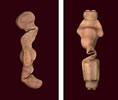 |
Aziz + Cucher have been collaborating on and exhibiting digital photography projects and sculpture since 1991. They live and work in Brooklyn, New York. Anthony Aziz began with an interest in documentaries and photograpy, while Sammy Cucher's work originated in theatre and video. Their collaborative interest is in "creating visual metaphors for the increasing role that new technologies play in our lives and how they affect us politically, socially, and psychologically."[1] They explore the possibilities for human beings in a time when we can transform ourselves and nature from "known forms into unknown forms" as a result of the potential inherent in the coming together of computer science, biotechnology, genetics and nanotechnology.[3] |
||
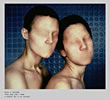 |
In a recent interview they speak of their focus on the fabricated/fictional quality as well as the documentary/real.
|
||
 |
Some ideas central to their work are:
|
||
Interior #5, 1999 |
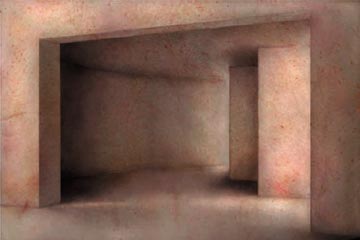
http://www.geneart.org/aziz%20+%20cucher.htm
This work is part of a series of interiors: http://www.azizcucher.net/interiorsHome.html
In describing this work they state that "the viewer is presented with an enclosure of skin. ...in this case, the viewer occupies metaphorically the space of the photograph...these interiors take such a notion of "turning inwards" into a phenomenological experience of the world. As a result, there occurs both a sense of disorientation and identification with the feeling one has of being inside of one’s body."
"At MIT and other places people are talking about sentient rooms that are designed to become almost like a prosthetic human environment. Our interiors take the psychasthenic utopia envisioned by so many techno and virtual reality gurus to its logical circuitous conclusion, fulfilling the dream of a regressive womb-like space where there is no longer a separation between subject and environment; where all interaction is one steady stream of sensorial data. ... But I really want to stress that with the Interiors, we are in no way illustrating any of these cyborg theories. We are much more interested in looking for a visual poetics that generates a psychological response in the viewer. Of course, it may reflect our moment, but we would like to believe that these images have a staying power that goes beyond our time. We are indeed trying to approach that space of myth ... As a purely mythical image, the Interiors are like "mirrors of flesh....That the skin itself is a reflective surface or mirror as in the example of the mimicry of certain insects in the forest or as in the psychological state of psychasthenia... we’re just trying to add to that history of meaning and expanding those associations, drawing from what we see around us but also giving way to our imagination. ."[4]
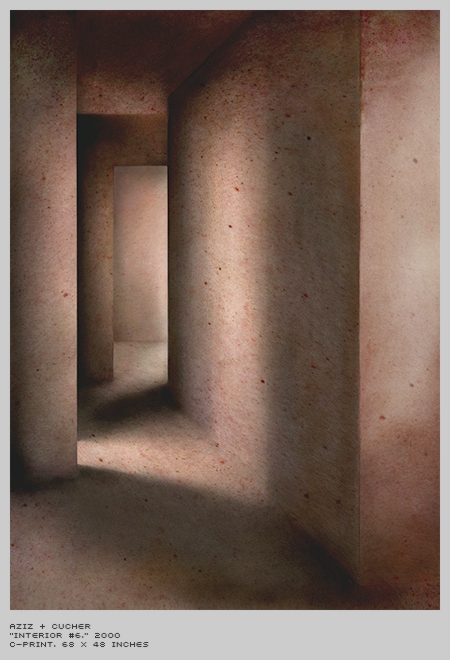

Additional works: |
Faith,
Honor and Beauty, 1992
Dystopia
1994-95
Plasmorphica
1996-97
Chimera
1998-99
Interiors
1999-2000
Naturalia
2000-2001
Work from Dystopia: |
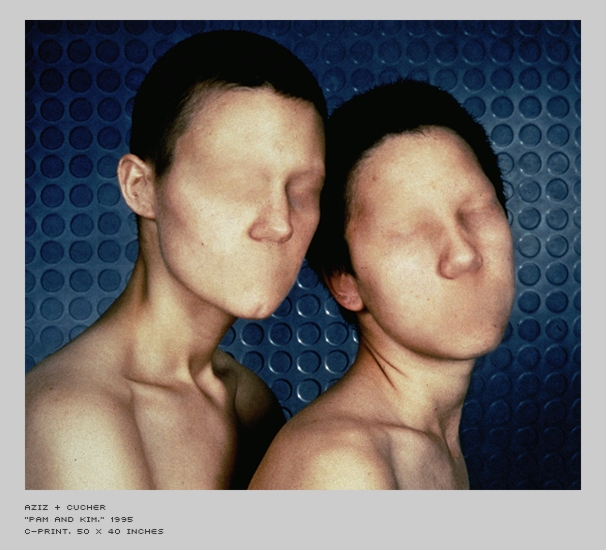
Work from Chimera: |
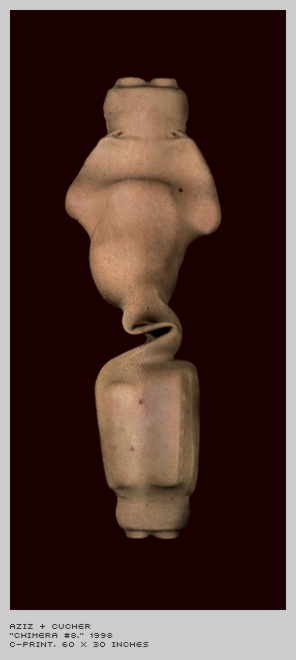 |
Excerpts from a dialog about the Chimera images from a recent interview[4]: TNG: Thyrza Nichols Goodeve C: Sammy Cucher A: Anthony Aziz TNG: Does this also pertain to the chimeras? Although superficially they might look abject, these images seem to be about something coming into existence, rather than deteriorating; some kind of transformation. C: I think you’re right. It’s not about decay, it’s about birth. Birth of a new form, of a new possibility that might be awful but we don’t yet know. We say we’re working in a post-Benjamin kind of aesthetic in the sense that we’re pondering the possibility of a new aura. Where the age of mechanical reproduction introduced the loss of the aura according to Benjamin, the age of biotechnical reproduction offers the production of a new kind of aura. TNG: In terms of the current work’s relationship to the body, I think of Deleuze’s notion of "the body without organs" that was so influential in the late 80s and early 90sbecuase your chimeras are really organs without the body, aren’t they? A: Yes, they are all the organs that didn’t find a body! And another exchange... A: Yes. Because these pieces are made within the context of the crossover between the biological and the biotechnological that is currently taking place. That’s why we chose the title, Chimera, the mythical creature made from the forepart of a lion, the hind part of a dragon, and a middle formed from a goat. TNG: A crossover which is producing a new notion of the uncanny based in what we can call the biotechnological unconscious. And you are ambivalent about this? C: Yes, we experience the new biotechnological reality as both something comforting and disconcerting. |
|
Definition: Chimera - see glossary
- An organism, organ, or part consisting of two or more tissues of different genetic composition, produced as a result of organ transplant, grafting, or genetic engineering
- A monster represented as vomiting flames, and as having the head of a lion, the body of a goat, and the tail of a dragon.
- A modular, X Window System-based World-Wide Web browser for Unix.
References |
||||